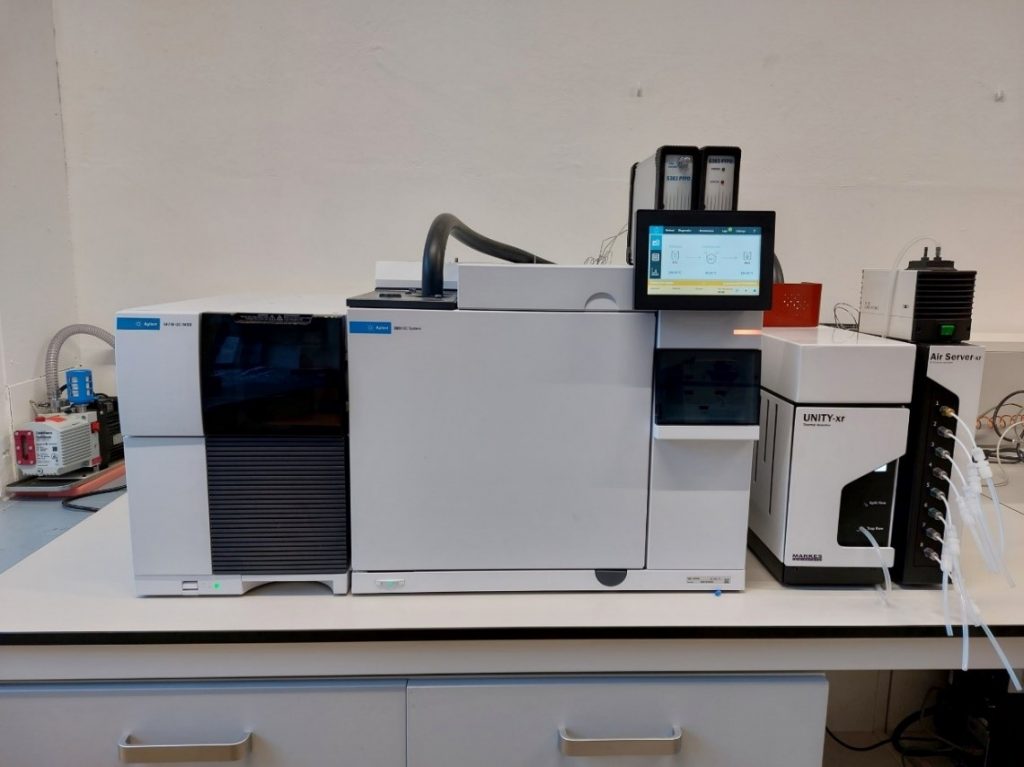Omnia venenum sunt: nec sine veneno quicquam existit.
Paracelso
Dosis sola facit, ut venenum non sit.
Chemical analysis is a useful tool for obtaining qualitative and quantitative information on the molecules present in an odorous sample.
The chemical characterisation of odour emissions requires high-performance instrumentation, capable of resolving the complexity of the matrix under examination, and highly sensitive, capable of detecting the presence of trace or ultra-trace substances, characterised by a very low threshold of perception (odour threshold, OT).
To this end, within our Laboratory, gas chromatography coupled with three detectors in parallel is used as a speciation analysis technique: a mass spectrometry (MS) for the identification of the species present, a Flame Ionisation Detector (FID), for the quantification of volatile organic compounds, and a Pulsed Photometric Flame Detector (PFPD) for the detection and quantification of sulphur compounds.

The output data of a gas chromatographic analysis is a chromatogram, i.e. a plot describing the response of the analytical signal to changes in time and from which it is possible to observe, at different retention times, the peaks corresponding to the different molecules within the sample. The molecules are separated due to their different ability to interact with the gas chromatography column. Under each peak of the chromatogram, it is possible to display the mass spectrum of the eluted species and thus obtain an unambiguous identification of the substance.
Chemical analysis makes it possible to obtain the complete speciation of the species present, adding qualitative and quantitative information to the odour perception data. This is particularly useful if one wants to assess compliance with regulations on the concentrations of pollutants emitted during a particular production process or if one is interested in assessing the toxicological risk associated with the components present or even in identifying the molecules responsible for the odour phenomenon.